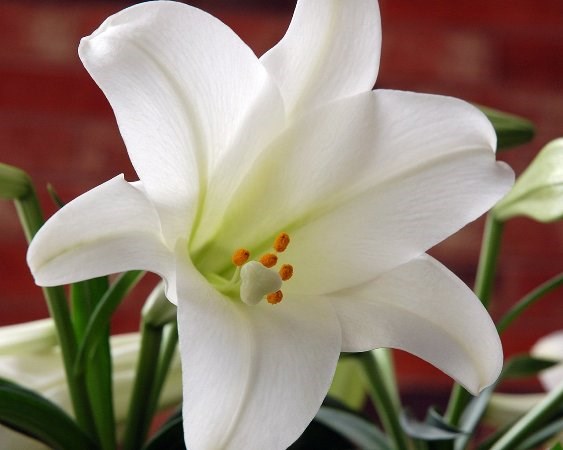As we approach Easter, the characteristic symbol of the Easter lily begins to grace shops and homes. We have long associated this plant with spring and the Easter season. Liliumlongiflorum, the Latin name for the Easter lily, is native to the Ryukyu Islands of southern Japan. The Easter lily is a symbol of purity and grace throughout the ages symbolizing joy, hope and life.
Prior to 1941, the majority of the Easter Lily bulbs were exported to the United States from Japan. The Second World War eliminated the dependence on Japanese-produced bulbs and commercial bulb production shifted to the United States. Today more than 95 per cent of all bulbs grown for the potted Easter lily market are produced by just 10 farms in a narrow coastal region straddling the California-Oregon border.
The production of consistent, high-quality lily bulbs requires specific climatic conditions, which just happen to exist in this region aptly termed the Easter Lily Capital of the World. The Easter lily bulbs must be cultivated in the fields for three, and sometimes four years, before they are ready to be shipped to commercial greenhouse growers. Throughout that time, the bulbs are never dormant and require constant care and attention to assure superior quality and cleanliness. Each bulb is handled up to 40 times before it is ready to be shipped.
The Easter lily bulbs are harvested in the fall, packed and shipped to commercial greenhouses where they are planted in pots and forced under controlled conditions to bloom for the Easter holiday. The cultivar most widely grown today is Nellie White.
When purchasing an Easter lily, look for high quality plants that are aesthetically pleasing from all angles. Select medium-to-compact plants that are well-balanced and proportional in size ‑ not too tall and not too short. Choose plants with foliage that is dense and plentiful, all the way down to the soil line. As the flowers mature, remove the yellow anthers before the pollen starts to shed. This gives longer flower life and prevents the pollen from staining the white flowers. When a mature flower starts to wither after its prime, cut it off to make the plant more attractive whileÌý still enjoying the fresher blooms.
In the home, Easter lilies prefer relatively cool temperatures of 18 to 21 C. Avoid placing plants near drafts, and avoid exposure to excess heat or dry air from appliances, fireplaces or heating ducts. The lily will thrive near a window in bright, indirect natural daylight. Easter lilies prefer moderately moist, well-drained soil. Water the plant thoroughly when the soil surface feels dry to a light touch, but avoid over-watering. If the pot is wrapped in decorative foil, be careful not to let the plant sit in trapped, standing water. For best results, remove the plant from decorative pots or covers, take it over the sink and water thoroughly until water seeps out of the pot's drain holes to completely saturate the soil. Allow the plant to air for a few minutes and discard the excess water before replacing it back into its decorative pot cover.
It is difficult to force Easter lilies into bloom a second time. What you can do is plant them outside in the spring and they may bloom again in the fall. They require a location with bright light and well-drained soil that is rich in organic matter. They need some shelter from extreme heat or wind. They will not survive our prairie winter.
If you do desire a lily for your garden that is similar to the Easter lily but Prairie hardy then there are a couple of choices. Liliumlongiflorum Snow Queen blooms in mid to late summer, is similar to the Easter lily but has slightly smaller blooms. It generally has three to five blooms per stem. Casa Rosa is similar but has blooms that are a nice soft pink colour. They seem to survive our climate for a time as long as there is good snow cover.
Hanbidge is the lead horticulturist with Orchid Horticulture. Find us at ; by email at [email protected]; on facebook @orchidhort and on instagram at #orchidhort.
Ìý
Ìý




